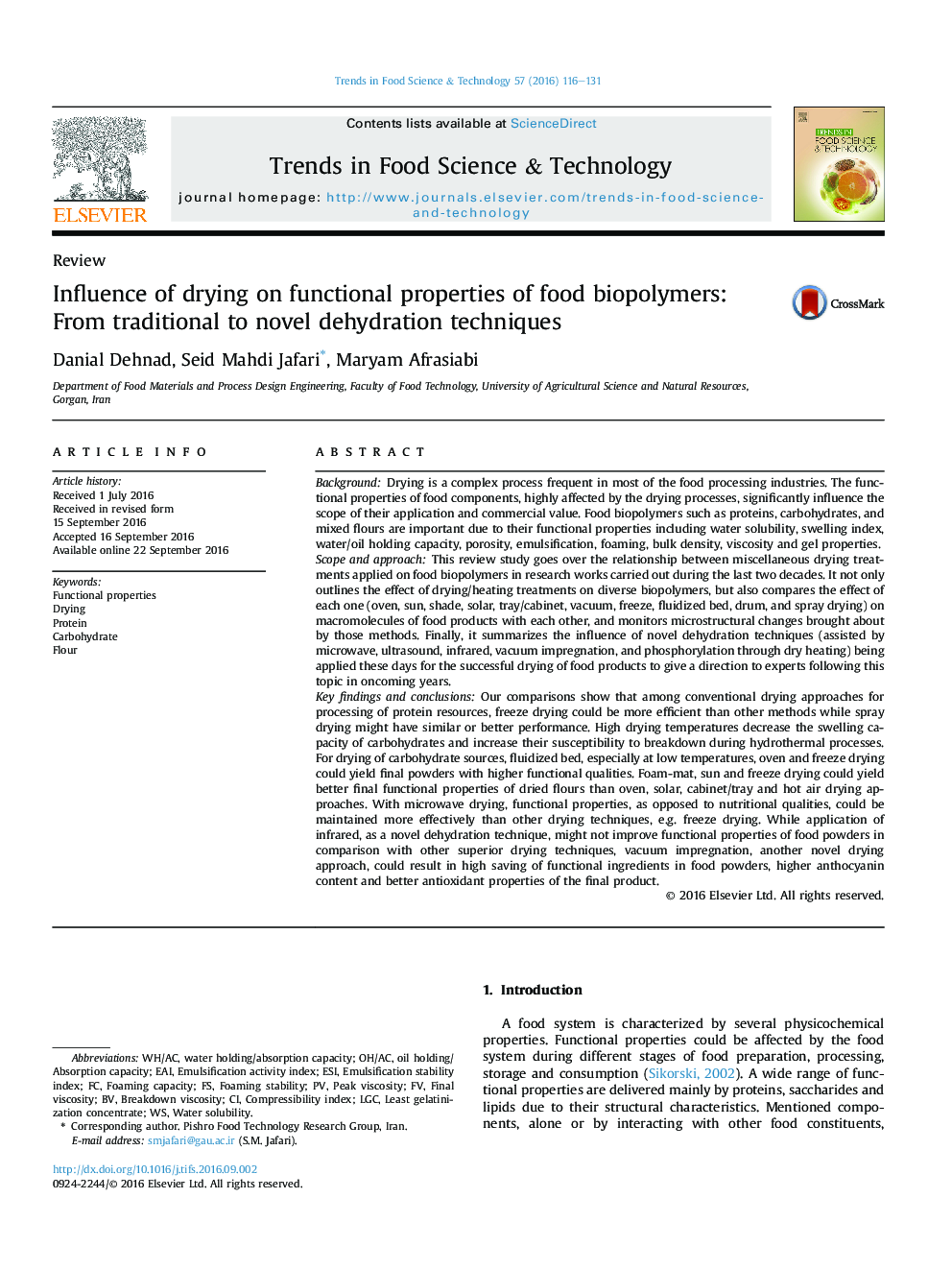| Article ID | Journal | Published Year | Pages | File Type |
|---|---|---|---|---|
| 5523850 | Trends in Food Science & Technology | 2016 | 16 Pages |
â¢Functional properties of food biopolymers are highly affected by drying process, dryer type, temperature and, process time.â¢The best conditions for maintaining functional properties are a compromise between drying time and temperature.â¢Among drying methods, spray drying shows the appropriate conditions considering functional properties of food biopolymers.â¢Foam-mat, sun and freeze drying could represent better functional properties of dried flours than other drying methods.
BackgroundDrying is a complex process frequent in most of the food processing industries. The functional properties of food components, highly affected by the drying processes, significantly influence the scope of their application and commercial value. Food biopolymers such as proteins, carbohydrates, and mixed flours are important due to their functional properties including water solubility, swelling index, water/oil holding capacity, porosity, emulsification, foaming, bulk density, viscosity and gel properties.Scope and approachThis review study goes over the relationship between miscellaneous drying treatments applied on food biopolymers in research works carried out during the last two decades. It not only outlines the effect of drying/heating treatments on diverse biopolymers, but also compares the effect of each one (oven, sun, shade, solar, tray/cabinet, vacuum, freeze, fluidized bed, drum, and spray drying) on macromolecules of food products with each other, and monitors microstructural changes brought about by those methods. Finally, it summarizes the influence of novel dehydration techniques (assisted by microwave, ultrasound, infrared, vacuum impregnation, and phosphorylation through dry heating) being applied these days for the successful drying of food products to give a direction to experts following this topic in oncoming years.Key findings and conclusionsOur comparisons show that among conventional drying approaches for processing of protein resources, freeze drying could be more efficient than other methods while spray drying might have similar or better performance. High drying temperatures decrease the swelling capacity of carbohydrates and increase their susceptibility to breakdown during hydrothermal processes. For drying of carbohydrate sources, fluidized bed, especially at low temperatures, oven and freeze drying could yield final powders with higher functional qualities. Foam-mat, sun and freeze drying could yield better final functional properties of dried flours than oven, solar, cabinet/tray and hot air drying approaches. With microwave drying, functional properties, as opposed to nutritional qualities, could be maintained more effectively than other drying techniques, e.g. freeze drying. While application of infrared, as a novel dehydration technique, might not improve functional properties of food powders in comparison with other superior drying techniques, vacuum impregnation, another novel drying approach, could result in high saving of functional ingredients in food powders, higher anthocyanin content and better antioxidant properties of the final product.
Graphical abstractDownload high-res image (178KB)Download full-size image
